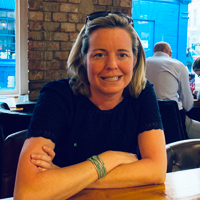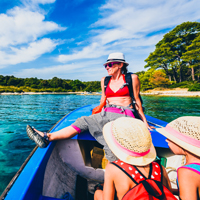7 Weekend Getaways for Digital Nomads Living in Gwangju
Summary: Planning a quick weekend getaway is a great way to save money while still seeing new places. Here are 7 fun weekend getaways for digital nomads living in Gwangju.
Digital nomads living in Gwangju, South Korea, have the unique opportunity to explore a variety of fascinating destinations on their weekends. From bustling cities to tranquil natural retreats, there's something for every type of traveler. While some spots are well-known and popular among tourists, others are hidden gems waiting to be discovered. Here are seven weekend getaways that offer a perfect blend of popular and off-the-beaten-path experiences, all within reach from Gwangju.
Jeonju Hanok Village
Jeonju Hanok Village is a popular destination for those looking to experience traditional Korean culture. With over 800 traditional 'hanok' houses, this village offers a glimpse into Korea's past. Visitors can enjoy wearing 'hanbok' (traditional Korean attire), trying their hand at traditional crafts, and sampling the famous Jeonju Bibimbap. The village also hosts various cultural events and festivals throughout the year.
How to Get There: Jeonju is easily accessible from Gwangju by bus or train, with the journey taking approximately 1.5 hours.
Travel Tip: Don't miss the chance to stay overnight in one of the hanok guesthouses for an authentic experience. Also, visit the Jeonju Traditional Wine Museum to learn about and taste Korean rice wines.
Where to Stay: Jeonju Hanok Village has several hanok stays like Jeonju Hanok Living Experience Center or Rakkojae, which offer traditional Korean lodging. Some may even include cultural experiences like tea ceremonies.
Where to Eat: Hanok Village is home to many traditional tea houses and restaurants. For a unique dining experience, try Hankookjib, known for its Jeonju Bibimbap, or visit Taejo Gamjatang for their hearty pork bone soup.
Boseong Green Tea Fields
Boseong is renowned for its vast and picturesque green tea fields. The Daehan Dawon Tea Plantation is a particularly stunning spot where you can walk among the rows of tea bushes and enjoy panoramic views. Visitors can also learn about the tea-making process and participate in tea picking and tasting events. The nearby Yulpo Beach and Hot Springs offer a relaxing end to a day of exploration.
How to Get There: The best way to reach Boseong from Gwangju is by intercity bus, which takes about 2 hours.
Travel Tip: Visit during the Boseong Green Tea Festival in May to enjoy the full cultural experience, including traditional performances and special events.
Where to Stay: The Yulpo Beach Hotel & Resort offers comfortable accommodations with views of the sea and is close to the tea fields.
Where to Eat: Stop by the Tea House in the plantation area for some green tea ice cream or visit the nearby Nokcha (Green Tea) Restaurant for dishes infused with the local tea.
Suncheon Bay Wetland Reserve
For nature enthusiasts, Suncheon Bay Wetland Reserve is a must-visit. It's one of the world's top five coastal wetlands, home to countless species of birds and plants. The eco-park offers boardwalks through the reeds, an observation tower for bird-watching, and the stunning Suncheon Bay Garden. The area is also known for its beautiful sunset views.
How to Get There: Suncheon is accessible from Gwangju by train or bus, with the trip taking around 1 to 1.5 hours.
Travel Tip: The reed fields are particularly breathtaking during the autumn months when they turn a golden hue. Also, try to visit during the migratory bird season for an unforgettable sight.
Where to Stay: Suncheon has various accommodation options, including the Suncheon Royal Tourist Hotel, which offers comfortable rooms and amenities.
Where to Eat: The Suncheon Bay Eco-Environmental Park area has several restaurants where you can try local specialties like the Suncheon Bay reed field crab.
Mudeungsan National Park
Mudeungsan National Park is a haven for hikers and outdoor lovers. The park features a range of trails leading to stunning viewpoints, temples, and rock formations. The most famous peaks, Cheonwangbong, Jiwangbong, and Inwangbong, offer challenging hikes and rewarding vistas. The park is also home to historical sites like the Jeungsimsa Temple.
How to Get There: The park is located just outside of Gwangju, making it easily accessible by local bus or taxi in under an hour.
Travel Tip: Visit during the spring or fall for the best weather and to see the park's flora and fauna at its most vibrant.
Where to Stay: Stay at the Mudeung Park Hotel for its proximity to the park and comfortable facilities.
Where to Eat: After a day of hiking, enjoy a meal at one of the local restaurants near the park's entrance, such as Mudeungsan Jangteo, which serves up delicious Korean mountain vegetable dishes.
Gochang Dolmen Site
The Gochang Dolmen Site is an unusual and off-the-beaten-path destination that offers a unique glimpse into Korea's prehistoric past. This UNESCO World Heritage site features the largest and most varied collection of dolmens, which are ancient stone grave markers. The site is not only historically significant but also offers a peaceful rural landscape to explore.
How to Get There: Gochang can be reached by bus from Gwangju, and the journey takes around 1.5 hours.
Travel Tip: Combine your visit with the nearby Gochang Green Barley Field Festival in April for a truly local experience.
Where to Stay: There are local guesthouses and pensions in Gochang, such as the charming Gochang Guesthouse, offering a cozy stay.
Where to Eat: Try the regional specialty, Gochang Heukdoejip, which is a black pork barbecue that's popular among locals and visitors alike.
Wolchulsan National Park
Wolchulsan National Park is another less-traveled destination that offers breathtaking scenery and the highest peak in the Jeollanam-do province. The park's main attraction is the Cloud Bridge, a suspension bridge that offers dramatic views of the surrounding mountains and valleys. The park has a variety of trails suitable for all levels, from easy walks to challenging climbs.
How to Get There: The park is about a 1.5-hour drive from Gwangju. Public transportation options are available but may involve transfers.
Travel Tip: Visit in the fall to see the autumn leaves or in the spring when the azaleas are in full bloom.
Where to Stay: The nearby city of Yeongam offers various accommodation options, such as the Yeongam Pottery Pension, which features traditional Korean-style rooms.
Where to Eat: In Yeongam, try the local specialty, Gulbi (dried yellow corvina), at one of the many restaurants specializing in this delicacy.
Upo Wetland
Upo Wetland is a hidden gem that is often overlooked by tourists. It's the largest inland wetland in Korea and offers a serene and almost mystical atmosphere. The wetland is home to a rich biodiversity, including numerous bird species, making it a paradise for birdwatchers. Visitors can explore the area via walking paths and observation decks.
How to Get There: The journey to Upo Wetland from Gwangju can take around 3 hours by bus or train with a transfer in Daegu.
Travel Tip: Rent a bike at the entrance of the wetland to cover more ground and enjoy the scenery at a leisurely pace.
Where to Stay: Accommodations are limited near Upo Wetland, but the nearby city of Changnyeong offers hotels like the Changnyeong Hotel.
Where to Eat: The Changnyeong area is known for its delicious eel dishes, so be sure to try one at a local restaurant like Changnyeong Jangeogui.
About the Author
 Betsy Burlingame is one of the founders of Digital Nomad Exchange and the Founder and President of Expat Exchange. She launched Expat Exchange in 1997 as her Master's thesis project at NYU. Prior to Expat Exchange and Digital Nomad Exchange, Betsy worked at AT&T in International
and Mass Market Marketing. She graduated from Ohio Wesleyan University
with a BA in International Business and German.
Betsy Burlingame is one of the founders of Digital Nomad Exchange and the Founder and President of Expat Exchange. She launched Expat Exchange in 1997 as her Master's thesis project at NYU. Prior to Expat Exchange and Digital Nomad Exchange, Betsy worked at AT&T in International
and Mass Market Marketing. She graduated from Ohio Wesleyan University
with a BA in International Business and German.
Some of Betsy's articles include 12 Best Places to Live in Portugal, 7 Best Places to Live in Panama and 12 Things to Know Before Moving to the Dominican Republic. Betsy loves to travel and spend time with her family. Connect with Betsy on LinkedIn.

With PassportCard, you'll never worry about paying your medical bills out of pocket again. Get up to 10% off on your policy now.
Get Quote
 PassportCard Expat Health Insurance
PassportCard Expat Health InsuranceWith PassportCard, you'll never worry about paying your medical bills out of pocket again. Get up to 10% off on your policy now.
Get Quote
![]() Korea Forum
Korea Forum
Talk with other digital nomads and expats in Korea on our Korea forum - meet people, get advice and help others.
![]() Contribute
Contribute
Help others in Korea by answering questions about the challenges and adventures of living in Korea.
Digital Nomads in Korea offer advice about healthcare, hospital visits, emergency rooms visits, finding a doctor and buying health insurance in Korea.



